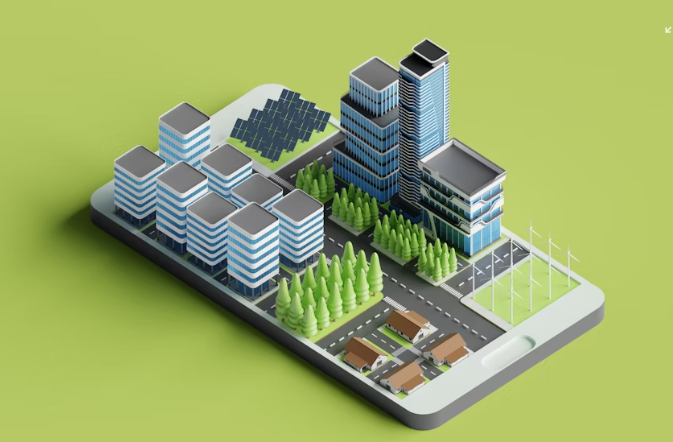Picture a city that almost thinks for itself—roads that share real-time traffic with your car, lights that dim when no one is around, apps that connect you to city services in seconds. This isn’t science fiction. These are the smart cities of tomorrow, where technology reshapes how we live, move, and connect. Smart cities put a spotlight on sustainability, efficiency, and well-being, driven by advanced tech that blends seamlessly with daily urban life.
Everywhere, leaders and residents are asking: How do we manage growing populations, shrinking resources, and the need for cleaner living? Smart cities aim to answer with a new approach—using data, sensors, AI, and networks to create places that feel more personal, responsive, and sustainable. Let’s dive into how these cities come to life.

The Pillars of Smart Cities: Technology at the Core
Smart cities don’t just layer tech on top of old systems. They rebuild from the inside out, centered on four core technologies: IoT, artificial intelligence, big data, and strong, fast networks. These tools work together to bring people, systems, and information closer.
Internet of Things (IoT) and Urban Data Collection
IoT turns the city into a living network. Think of a system where sensors in streetlights, buses, and even trash bins gather data 24/7. This flow of real-time information helps cities spot problems fast, like traffic jams or full garbage cans. Here’s why it matters:
- Sensors track air quality so officials can spot pollution hot spots and respond sooner.
- Connected water meters can alert teams if a leak appears, helping to cut waste.
- Smart grids adjust power use based on what’s actually needed, cutting costs and saving energy.
Cities use this constant stream of data to make smarter, quicker decisions. IoT is the foundation that lets cities “sense” and respond just like a living organism.
AI and Big Data for Smarter Decision-Making
Collecting all that data is only part of the story. Making sense of it is where artificial intelligence (AI) and big data analytics come in. These systems:
- Predict traffic patterns and adjust lights to keep cars moving.
- Find ways to save energy by studying when buildings use the most power.
- Spot trends in public health, helping officials act before small issues become big problems.
AI doesn’t just crunch numbers. It recommends real-world solutions based on patterns in the data. When paired with big data, it allows city leaders to make choices that keep pace with residents’ needs.
High-Speed Connectivity and Urban Networks
A smart city can’t run on slow connections. Fiber-optic lines and 5G networks are the nerve system—making sure devices, sensors, and people stay in sync. Reliable, fast internet:
- Supports self-driving shuttles by letting them talk to each other in real time.
- Keeps emergency services connected so response times shrink.
- Lets residents use city apps and services without frustrating delays.
High-speed networks are the invisible glue, holding all the city’s moving parts together.
Transforming Urban Life: Practical Impacts on Residents
The tech behind smart cities may sound complex, but the benefits land squarely in daily life. Let’s see how these smart systems shape the real world for everyone living in the city.
Improved Mobility and Transportation
Traffic is one of the biggest headaches in cities. Smart traffic systems give cities a way out of the jam. Signal lights use real-time data to change as cars approach, easing congestion. GPS-powered buses adjust routes based on demand, so you spend less time waiting.
Shared bikes and e-scooters fill gaps for short trips, and integrated apps let you plan your route, book tickets, or hop on a ride—all from your phone. Here’s how smart mobility helps everyone:
- Reduces road congestion
- Shrinks carbon emissions
- Makes travel quicker and more predictable
Sustainable Energy and Resource Management
City resources are stretched. Smart cities focus on wringing every drop of value out of every watt and gallon. Smart grids respond to changes in demand and can pull from solar or wind at the right times. Water systems spot leaks using sensors, cutting waste and costs.
Here’s a simple table outlining common smart resource features:
| Technology | Core Function | Benefit |
|---|---|---|
| Smart Grids | Balance energy use | Lower bills, less pollution |
| Water Sensors | Detect leaks, monitor supply | Save water, prevent damage |
| Smart Waste | Signal bin status | Fewer pickups, cleaner streets |
These tools make it easier for cities to use resources wisely and stay green.
Enhanced Public Services and Citizen Engagement
Tech doesn’t just work behind the scenes. Smart cities put power in people’s hands through digital platforms:
- Apps let residents report potholes or outages in seconds.
- Open data dashboards show city spending, crime stats, and progress on projects.
- Online polls and community forums connect people with leaders.
This approach cuts red tape and builds trust. Residents get answers faster, and officials hear voices they might have missed before.
Conclusion
Smart cities hold real promise for making urban life cleaner, easier, and more connected. The mix of IoT, AI, big data, and strong networks lets leaders address today’s biggest challenges, from traffic gridlock to polluted air. Cities can cut waste, boost safety, and give people real power to shape their surroundings.
Of course, risks like privacy, security, and tech gaps remain. Not everyone will have fast internet right away, and cities need clear rules to keep personal data safe. These hurdles are part of the journey, not the end of it.
The future of cities is coming into focus—one where neighborhoods are not just home, but hubs of real change. Smart cities aren’t about robots or flying cars; they’re about living better, together, with technology that works for everyone.